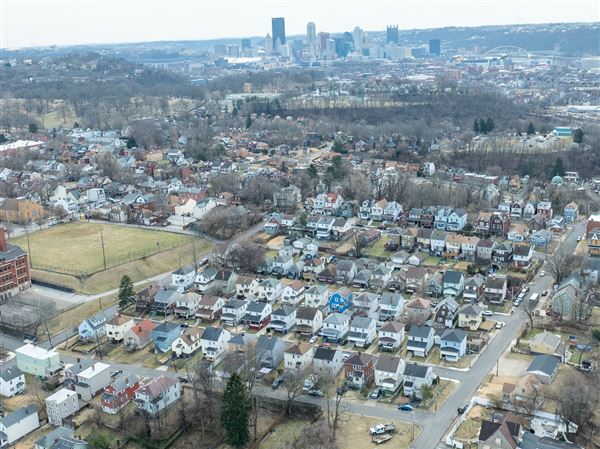With modes of transportation and hot development areas changing regularly, David Huffaker has a daunting task: developing a plan for public transit in Allegheny County for the next 25 years.
But Mr. Huffaker, chief development officer for the Port Authority, said the plan he will oversee over the next 18 months will concentrate more on the areas where the agency should provide service than on the mode of service it will use. With new modes of transportation arriving every few years — self-driving vehicles and shared services such as Uber and Lyft were just forward-thinking ideas five years ago — the agency can pick the vehicle to follow the transit road map when the time comes.
“We really want to focus on what the corridors should be where we should provide service,” Mr. Huffaker said. “We’ll worry about the mode for providing that service later. [The plan] gives us that North Star to point to.”
In a briefing for an authority committee and in an interview last week, Mr. Huffaker outlined the goals and procedures the agency will follow as it develops its first long-term plan since 2006.
To begin the process, Mr. Huffaker said, the agency is preparing a request for proposals so it can pick a consultant for the study by the end of summer. The study will include a series of public meetings to hear from riders as well as private sessions with local officials and social service agencies to identify areas where service should be considered.
The 2006 plan had a regional outlook and worked extensively with the nine other counties that are part of the Southwestern Pennsylvania Commission. This plan will consult other counties so it is compatible with their plans and services and will go to the SPC for approval, Mr. Huffaker said, but it will concentrate on Allegheny County.
“Our mandate is Allegheny County, so we’re providing a vision for Allegheny County for the next 25 years,” he said.
Some of the needs are obvious, Mr. Huffaker said, and will build on existing service and infrastructure.
For example, the Martin Luther King Jr. East Busway has the system’s busiest bus route but ends in Swissvale. The agency is interested in improving service to outlying east suburban areas such as Monroeville, whether through an extension of the busway that a previous study estimated at about $550 million or a less expensive Bus Rapid Transit system linked to the existing busway.
In the west, there has long been interest in providing better public transit to Pittsburgh International Airport either through an extension of the West Busway that now ends in Carnegie or something completely new. And on the inbound end, the West Busway’s exclusive road ends on busy West Carson Street rather than in Downtown Pittsburgh.
In the Golden Triangle itself, the system could use easier, more convenient hubs for bus or light-rail passengers to connect to other parts of the system.
Mr. Huffaker conceded that the agency faces some constraints as it develops the plan — financial and otherwise. A subway from Downtown to the airport sounds like an ideal connection, but with a likely price tag of several billion dollars that isn’t likely.
The region’s topography — three rivers with hills all around and lots of narrow roads with steep slopes — sets some natural pathways to use but also establishes obstacles that are difficult to overcome.
And then there’s the current reality: The authority has no room to expand its fleet of 720 buses because its four garages are full. A new garage is a top priority, but the agency hasn’t identified the 25 to 30 acres of land or the source for upward of $140 million that such a project would need.
Regardless, Mr. Huffaker said the plan will be a living document and the agency will try to address problems and needs as it identifies them. The key will be educating the public about the realities of public transit so the public can help the agency develop a plan that sets achievable goals.
“This is not a super-secret, Wizard of Oz project where we will come out and tell people what they need,” he said. “We need people to tell us what they think Port Authority should be. Let us know how we can best serve those needs.
“But the reality is, we don’t have pixie dust we can use to pay for things.”
The long-range plan will dovetail with two other authority objectives: developing a new branding scheme for the agency and reviewing its fare policy. It’s likely that all three issues will be addressed in the same public meetings.
“We’re going to have an exciting outreach process over the next few years,” Mr. Huffacker said. “These things are all going to be working together.”
CEO Katharine Eagan Kelleman told the authority board Friday that it’s OK to dream a little.
“It’s time to do a holistic view …,” she said. “Instead of looking at what we can afford, let’s go to what we deserve.”
Ed Blazina: eblazina@post-gazette.com, 412-263-1470 or on Twitter @EdBlazina.
First Published: June 2, 2019, 6:22 p.m.
















